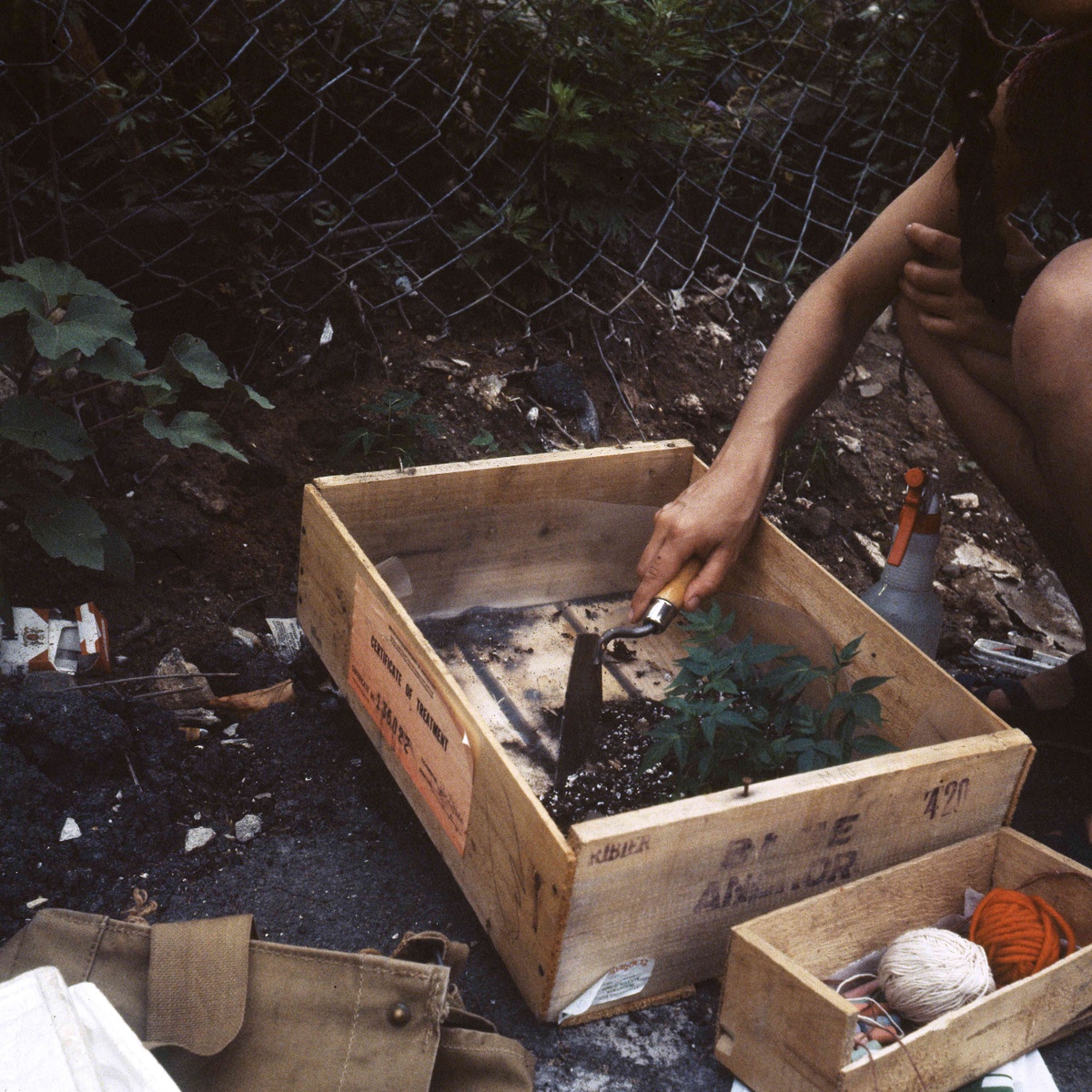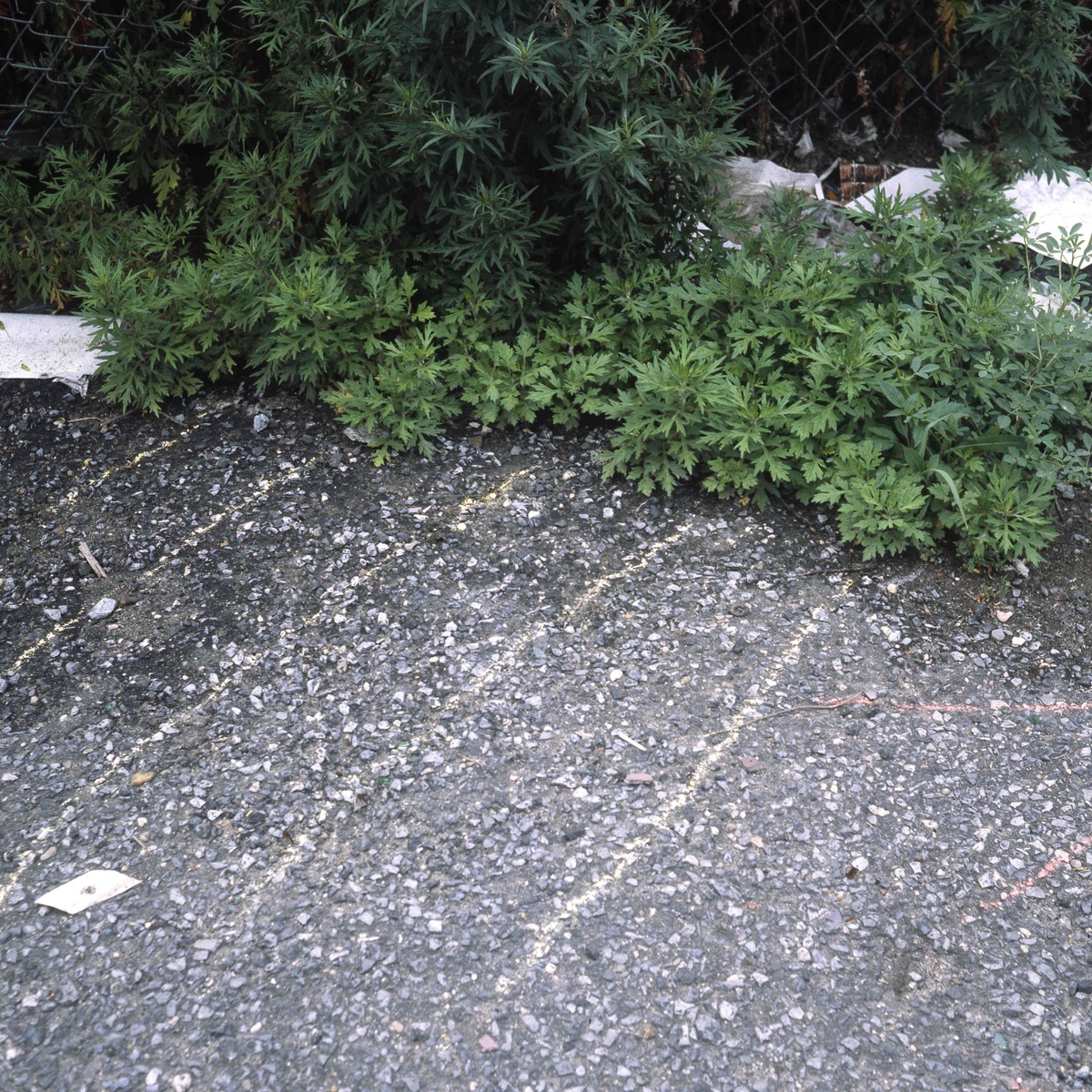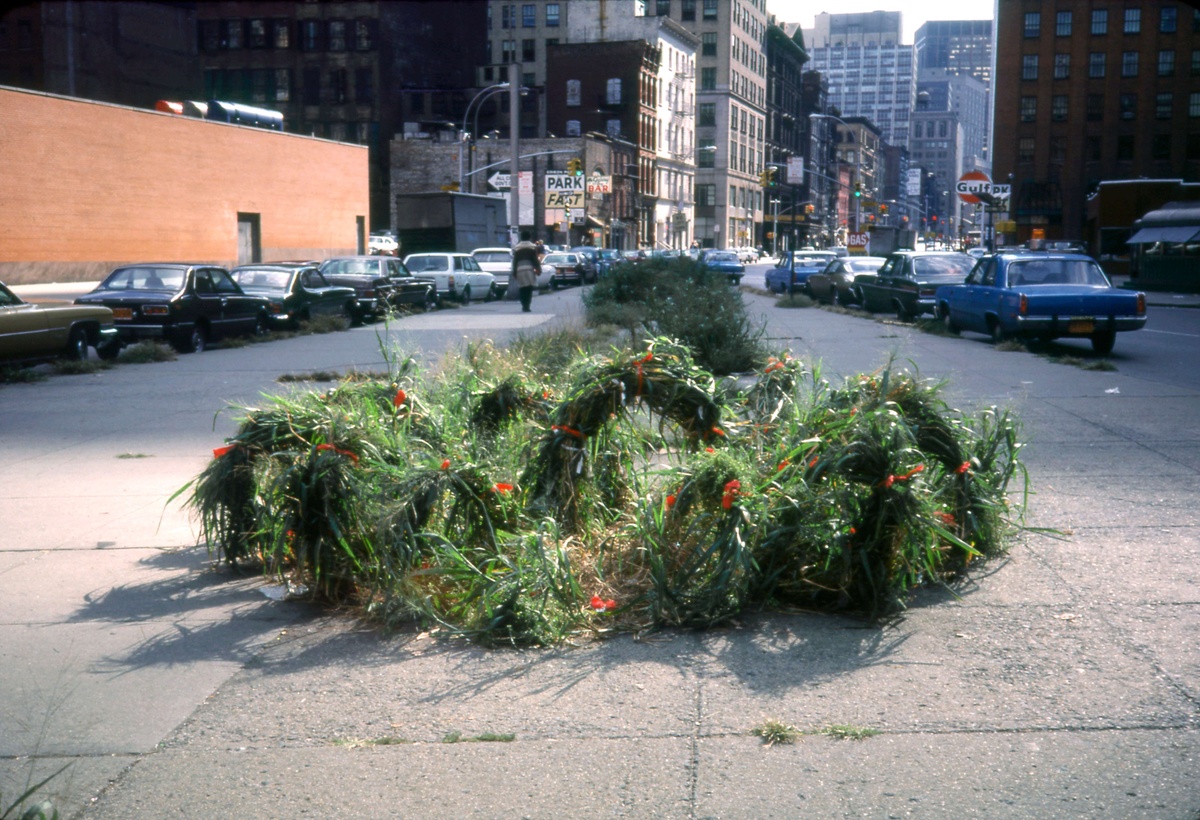Cecilia Vicuña on her Sidewalk Forests
- Texto
Cecilia Vicuña sat down with Jody Graf, curator of Life Between Buildings, to talk about her Sidewalk Forests—small, site-specific performance installations she made in easily-overlooked interstitial spaces of the city. She saw these works, in which bits of thread and dashes of chalk highlight weeds bursting through the pavement, as “small altars on the streets of New York, air vents for the earth, pasture born in the gutters.”
These ephemeral actions exist today in photographs and an accompanying poem that Vicuña wrote on the back of one, which translates to, “the earth breathes through the pavement’s cracks.” Drawing on Indigenous knowledge and her ecofeminist thought, Sidewalk Forests distill an awareness of the fragility and persistence of nature in the face of human intervention.
Cecilia Vicuña on her Sidewalk Forests
I arrived in New York, I think it was May 1980. Accidentally, I met someone and I stayed. I realized I was going to live in the city that I had least imagined to be the place for me––I’m a mountain person. Even when I lived in cities like Santiago or Bogotá, I always lived a few meters away from the mountains—actually, very close to the mountains, so I was perpetually going up and down. Truly, I was born next to the mountains.
I immediately connected in New York with what is invisible to New Yorkers. First, the cracks in the sidewalk. I began engaging them as a connection to the future return of the city to the forest, or to the nation’s past, when this was Lenni Lenape territory. That’s where the sidewalk forest comes from. Then, I connected to the water that traveled inside the pipes, because the area where I have been living for the last 40 years that in New York must have once been swampy wetlands with little creeks. I know that from the downstairs of my building, where there was a subterranean river. The basement is full of mold, like moss growing in creeks. You can feel it in your bones.
Great pools of water used to gather across the street from me, so I have done many works in these pools. It seems like the land still remembers its own being, you know? At the time we didn’t have access to the Hudson River. Nevertheless, I crawled under the wire fences and I reached into the river and began doing work that would float away in the river, with grass and things like that. There was also an empty lot half a block away from my building. My building is an artist co-op, which is how it has kept a bit of the spirit of the ‘60s and ‘70s. There was some sort of gravelly soil in this empty lot and I was working with the weeds, creating weavings with the weeds and so forth. I longed for the forest, and my friends told me to go to the Bronx, and so I did works in the Bronx forest, which is a native forest. I developed these works in New York all through the ‘80s and ‘90s. That’s how I began my life as an artist in New York. Nobody paid attention to what I did because I was working for the land itself.
Passersby are always part of this story, because you may be up in the mountains in a place where you think there is no one, but there is someone. And so passersby have always been important to me, because the person that is passing through, who is on a run or just fishing, doesn’t have the arrogance of city people. The city people may think you are doing something illegal, something that you shouldn’t be doing. But of course, the work is for the forces of life, the wind, the ocean, the night, the sky. That is what this work lives for.
A couple of years after I moved to New York, an empty lot in my neighborhood became a park and I became one of the community gardeners in the park. It is a wonderful place for me and I have cultivated it up to the present. Now my little garden is wild, with bees and butterflies. That is one of the few things that we can actually do for the native species of the land.
Citation: Vicuña, Cecilia. Interview with Jody Graf. Cecilia Vicuña on her “Sidewalk Forests.” November 23, 2021.













